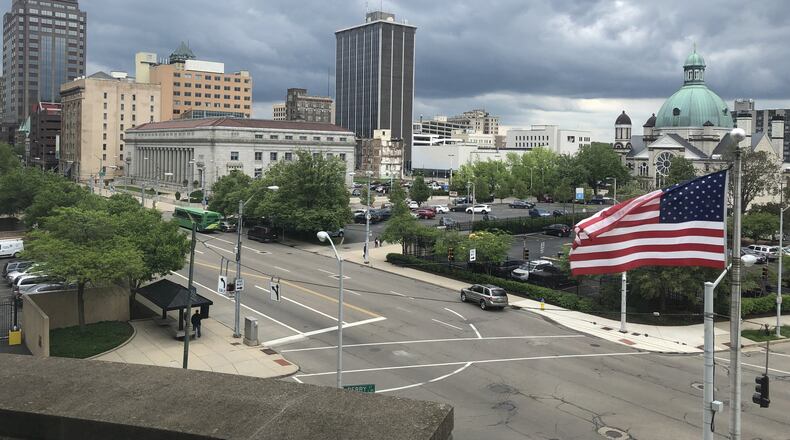“I think it’s important to recognize downtown’s history,” Kroeger said. “But also, this provides a good number of buildings a large head start in the process of applying for historic tax credits.”
MORE: Dayton could become Ohio’s largest city with downtown historic district
The U.S. Secretary of the Interior announced that the Downtown Dayton Historic District has been placed on the National Register of Historic Places.
The district covers most of the city’s Central Business District and its period of significance is 1860 to 1980, which makes the district unique in its size (220 acres, or more than 36 blocks) and span of historic relevancy, city staff said.
“It’s unique for a city of this size to have one all-encompassing historic district,” Kroeger said.
Properties in the district do not face additional regulations or restrictions, Kroeger said.
“Only when a property or district is locally designated as historic do the restrictions apply,” he said. “And, in this case, the new district will be National Register only, not local.”
The district has 54 buildings, sites or public spaces and statues or sculptures that were already on the national registry, according to the application for placement on the register.
With placement on the register, the district now has 87 buildings that are considered contributing to its historic designation, meaning they are eligible for state and federal tax credits that can help finance the rehab and reuse of structures.
Some of these contributing buildings would be unlikely to get approval for placement on the register if they applied for designation on their own, Kroeger said.
MORE: Historical designation could bolster downtown Dayton’s revival
But Kroeger said that was one of the main reasons the city applied to establish the new district: To improve the marketability of downtown buildings and remove a step that takes developers time and money to work through.
The new district also eliminates the uncertainty developers might have about acquiring a property or moving forward with a rehab project when they do not know for sure whether they’ll get a historic designation, he said.
Property owners who want a building on the National Register have to hire a consultant, do the historic research, submit an application and wait for a review and approval.
HistoryWorks handled the research and did much of the work on the city’s nomination for the new district.
State and federal historic tax credits are another tool in the financial toolbox that can help make costly rehab projects economically viable, according to city staff and developers.
“Contributing buildings in the downtown historic district are now eligible for federal historic tax credits and state historic tax credits,” said Amy Walbridge, Dayton’s downtown development coordinator. “This offers bona fide developers another tool to help create financially feasible projects.”
Historic preservation tax incentives have helped fund a variety of celebrated downtown projects including the Steam Plant, the Delco Lofts, the Wheelhouse Lofts and the Dayton Arcade.
About the Author

